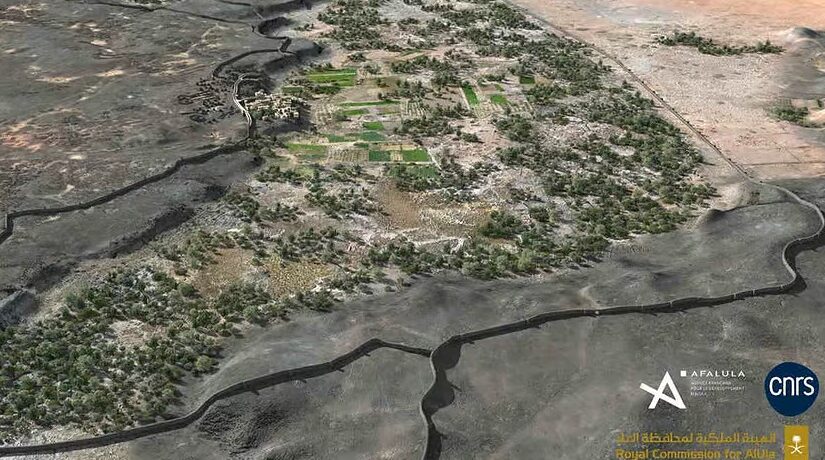
Oases in the region have been settled by human populations for 4,000-5,000 years. An oasis is a small patch of vegetation in the desert. Fed by sources of freshwater such as underground rivers and high water tables mean these areas can become vibrant, lush sanctuaries for plant and animal life.
Human-built aquifers and channels can help irrigate these areas making them suitable for long-term settlement.
Comment: And there's evidence in Iraq showing that its people had a seriously sophisticated understanding of the science of water: Ancient Sumerians invented water flumes thousands of years earlier than previously thought
The newly discovered fortification was revealed by scientists from the Centre National de la Recherche Scientifique (CNRS) in France and the Saudi Arabian archaeological commission, the Royal Commission for Al-'Ula.
Fortifications at Khaybar once stretched for 14.5 km and were between 1.7 and 2.4 m thick, according to field surveys and remote sensing data. The fortification walls would have been up to 5 metres high. It would have enclosed a territory measuring nearly 1,100 hectares.
The team of scientists estimate the settlement's walls were construction between 2250 and 1950 BCE, based on radiocarbon dating of samples collected during excavations.
Today, 4,000 years later, less than half the walls length and 74 bastions (protruding structures intended for defensive fire) remain preserved.
Numbers of walled oases have been found in north-western Arabia dating back to the Bronze Age (3300-1200 BCE). Fortified settlements became colossal in this time period, including the European "megaforts."
Arabian deserts are home to some of the oldest fortifications in the world, including the largest recognisable stone fortress in the world, the Citadel of Aleppo in Syria which has been inhabited for 4,500 years.
The world's oldest fortress was revealed late last year, dating back 8,000 years in Siberia.
The Khaybar Oasis fortification belonged to a network of walled oases in the region. Why it was built and the nature of the society that constructed it still remain mysteries. But the discovery sheds new light on human occupation in north-western Arabia and adds detail to our understanding of social complexity during the pre-Islamic period.



Comment: Evidently it was built to protect something from potential attack by invaders. Which corresponds to evidence elsewhere that not only did societies become more warlike, and this was then followed the collapse of Bronze Age societies across the planet:
- The Seven Destructive Earth Passes of Comet Venus
- Bronze Age shipwreck reveals complex trade network and other surprises
Other discoveries at Khaybar: